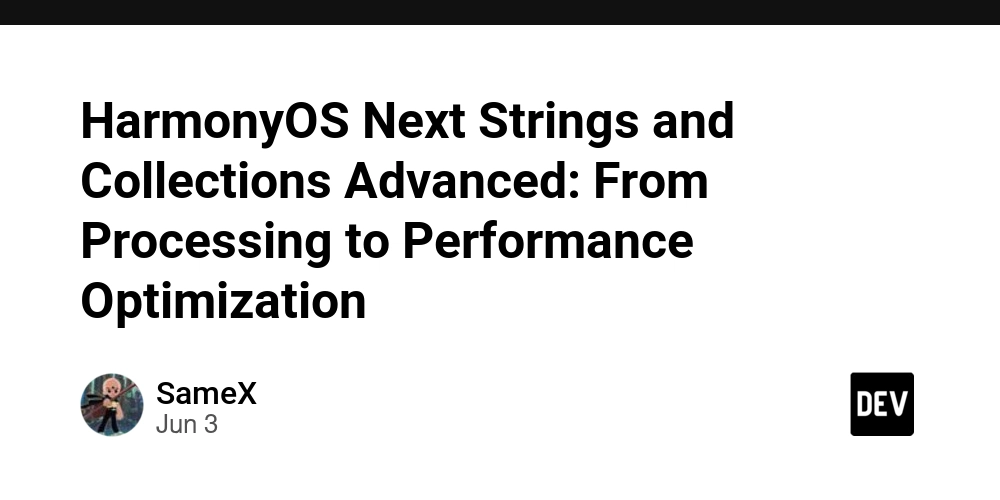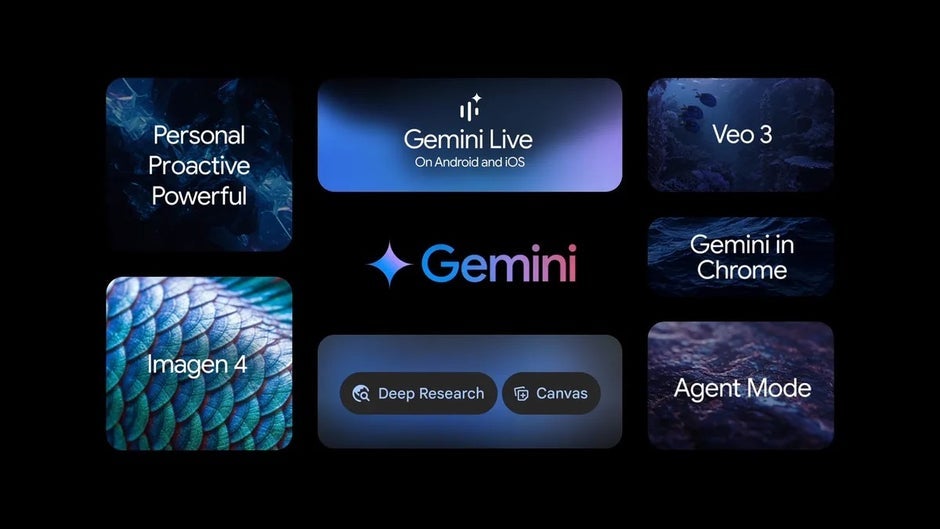HarmonyOS Next Strings and Collections Advanced: From Processing to Performance Optimization
In HarmonyOS Next development, string and collection types are the core tools for handling text data and complex data structures.Cangjie Language provides a rich string operation interface and high-performance collection types (such as Array, Map), which not only meets the needs of international multilingual scenarios, but also meets the challenges of high concurrent data processing.This article will combine features such as Unicode processing, regular matching, collection memory layout, and advanced application techniques for in-depth parsing of strings and collections. 1. String processing: from literal to regular matching String types support multiple literal forms and Unicode full process processing, which are suitable for text parsing, log processing, internationalization and other scenarios. 1. Three literal types and escape rules Type Definition Method Escape Rules Typical Scenarios Single-line string ' or " parcel Support \n, \" and other escape characters Short text, configuration items Multi-line string """ or ''' parcel Keep line breaks, support limited escape SQL statements, HTML fragments Multi-line original string Starting with #" or#' Unparsed escape characters, output as-is Regular expression, path string Example: Multi-line raw string matching path let filePath = ##"/user/documents/file.txt"## // directly match the file path without escaping the backslash let regex = Regex(filePath) // Used for file system search 2. Unicode byte-level operation Obtain the UTF-8 byte sequence of the string through the utf8 attribute, which is suitable for network transmission, encryption algorithms and other scenarios. let greeting = "Hello, the world!" for byte in greeting.utf8 { print("\(byte) ") // Output: 228 189 160 229 165 189 ... (UTF-8 encoded bytes) } 3. Regular expression practice: XML tag extraction Use the Regex class to achieve flexible pattern matching, supporting capture groups and backreferences. import std.regex.* let xml = "HarmonyOS Development GuideJohn" let regex = Regex("(.*?)") // Match the structure that matches the beginning and end tags let matches = regex.findAll(xml) for match in matches { let tagName = match.group(1) // Capture the tag name (such as "book") let content = match.group(2) // Capture tag content (such as "HarmonyOS Development Guide") println("Tag:\(tagName), content:\(content)") } 2. Collection type: memory layout and performance differences The memory layout of the collection type directly affects the access efficiency, and the appropriate data structure needs to be selected according to the business scenario. 1. Array: Advantages of sequential access for continuous storage Memory layout: Continuously store element references (Array) or value (VArray) on the heap. Performance Features: Fast sequential access (CPU cache prefetch optimization); Insert/delete in the middle (requires to move subsequent elements). Example: Comparison of array sorting performance let arr: Array = [5, 3, 8, 1] arr.sort() // Quick sort, time complexity O(n log n) 2. Map: Quick search for hash table implementation Memory layout: The hash bucket stores key-value pairs, and the storage location is calculated through the hash function. Performance Features: Average search time O(1), degenerates to O(n) during conflict; The key needs to implement the Hashable protocol. Example: User ID Quick Index let users: Map = [1:"Alice", 2:"Bob"] let name = users[1] // Get the name directly through ID, which is extremely efficient 3. Performance comparison: 100,000 operation tests Operation Type Array time-consuming (ms) Map time-consuming (ms) Scene Description Sequential Insertion 15 22 Posture Append Elements Intermediate Insert 89 - Array No. 50,000th bit insert element Random lookup 23 5 Get elements by index/key Conclusion: Array is used for frequent query of ordered data, and Map is used for rapid search of unordered data. 3. Collection concurrency and thread safety In a multithreaded environment, the thread safety of the collection is crucial, and the Actor model is the recommended solution. 1. Actor encapsulation collection operation Isolate shared collections through Actor to ensure that only one thread accesses at the same time. actor SafeCounter { private var count: Int = 0 receiver func increment() { count += 1 // Automatically ensure thread safety } receiver func get() -> Int { return count } } // Multi-threaded concurrent calls let counter = SafeCounter() let tasks = (0..100).map { _ in async { counter.increment() } } awaitAll(tasks) println("Count result: \(counter.get())") // Output 100, no race conditions 2. Immutable collection: Copy-On-Write optimization For read-only scenarios, use immutable collections (such as ImmutableArray) to av

In HarmonyOS Next development, string and collection types are the core tools for handling text data and complex data structures.Cangjie Language provides a rich string operation interface and high-performance collection types (such as Array, Map), which not only meets the needs of international multilingual scenarios, but also meets the challenges of high concurrent data processing.This article will combine features such as Unicode processing, regular matching, collection memory layout, and advanced application techniques for in-depth parsing of strings and collections.
1. String processing: from literal to regular matching
String types support multiple literal forms and Unicode full process processing, which are suitable for text parsing, log processing, internationalization and other scenarios.
1. Three literal types and escape rules
| Type | Definition Method | Escape Rules | Typical Scenarios |
|---|---|---|---|
| Single-line string |
' or " parcel |
Support \n, \" and other escape characters |
Short text, configuration items |
| Multi-line string |
""" or ''' parcel |
Keep line breaks, support limited escape | SQL statements, HTML fragments |
| Multi-line original string | Starting with #" or#' |
Unparsed escape characters, output as-is | Regular expression, path string |
Example: Multi-line raw string matching path
let filePath = ##"/user/documents/file.txt"## // directly match the file path without escaping the backslash
let regex = Regex(filePath) // Used for file system search
2. Unicode byte-level operation
Obtain the UTF-8 byte sequence of the string through the utf8 attribute, which is suitable for network transmission, encryption algorithms and other scenarios.
let greeting = "Hello, the world!"
for byte in greeting.utf8 {
print("\(byte) ") // Output: 228 189 160 229 165 189 ... (UTF-8 encoded bytes)
}
3. Regular expression practice: XML tag extraction
Use the Regex class to achieve flexible pattern matching, supporting capture groups and backreferences.
import std.regex.*
let xml = "HarmonyOS Development Guide John 2. Collection type: memory layout and performance differences
The memory layout of the collection type directly affects the access efficiency, and the appropriate data structure needs to be selected according to the business scenario.
1. Array: Advantages of sequential access for continuous storage
-
Memory layout: Continuously store element references (
Array) or value (VArray) on the heap. - Performance Features:
- Fast sequential access (CPU cache prefetch optimization);
- Insert/delete in the middle (requires to move subsequent elements).
Example: Comparison of array sorting performance
let arr: Array = [5, 3, 8, 1]
arr.sort() // Quick sort, time complexity O(n log n)
2. Map: Quick search for hash table implementation
- Memory layout: The hash bucket stores key-value pairs, and the storage location is calculated through the hash function.
- Performance Features:
- Average search time O(1), degenerates to O(n) during conflict;
- The key needs to implement the
Hashableprotocol.
Example: User ID Quick Index
let users: Map = [1:"Alice", 2:"Bob"]
let name = users[1] // Get the name directly through ID, which is extremely efficient
3. Performance comparison: 100,000 operation tests
| Operation Type |
Array time-consuming (ms) |
Map time-consuming (ms) |
Scene Description |
|---|---|---|---|
| Sequential Insertion | 15 | 22 | Posture Append Elements |
| Intermediate Insert | 89 | - | Array No. 50,000th bit insert element |
| Random lookup | 23 | 5 | Get elements by index/key |
Conclusion: Array is used for frequent query of ordered data, and Map is used for rapid search of unordered data.
3. Collection concurrency and thread safety
In a multithreaded environment, the thread safety of the collection is crucial, and the Actor model is the recommended solution.
1. Actor encapsulation collection operation
Isolate shared collections through Actor to ensure that only one thread accesses at the same time.
actor SafeCounter {
private var count: Int = 0
receiver func increment() {
count += 1 // Automatically ensure thread safety
}
receiver func get() -> Int {
return count
}
}
// Multi-threaded concurrent calls
let counter = SafeCounter()
let tasks = (0..100).map { _ in async { counter.increment() } }
awaitAll(tasks)
println("Count result: \(counter.get())") // Output 100, no race conditions
2. Immutable collection: Copy-On-Write optimization
For read-only scenarios, use immutable collections (such as ImmutableArray) to avoid locking overhead.
import std.immutable.*
let immutableList = ImmutableArray([1, 2, 3])
let newList = immutableList.insert(0, 0) // Generate a new array, the original array remains unchanged
4. Mixed scenarios: Strings and collections are processed in coordination
1. Log analysis: Statistical frequency by keyword
let logText = "ERROR: Disk full, WARNING: Network slow, ERROR: Connection lost"
let words = logText.split(separator: ", ") // Split string by comma
let freq: Map = [:]
for word in words {
freq[word] = (freq[word] ?? 0) + 1
}
println("Error log frequency: \(freq["ERROR"] ?? 0)") // Output 2
2. Internationalized text: Dynamic strings and set interpolation
let lang = "zh-CN"
let messages: Map = [
"welcome": "Welcome",
"goodbye": "Goodbye"
]
let greeting = "\(messages["welcome"]!), HarmonyOS user!"
println(greeting) // Output "Welcome, HarmonyOS user!"
Summarize
The string and collection types of HarmonyOS Next are designed with full consideration of performance and security:
- String: Coping with complex text scenarios through multiple literal and regular matching;
-
Collection: Select
Array/Mapaccording to the access mode, and use the Actor model to solve concurrency problems.





























































_.png)
















































































































![[The AI Show Episode 151]: Anthropic CEO: AI Will Destroy 50% of Entry-Level Jobs, Veo 3’s Scary Lifelike Videos, Meta Aims to Fully Automate Ads & Perplexity’s Burning Cash](https://www.marketingaiinstitute.com/hubfs/ep%20151%20cover.png)





























































































































![From electrical engineering student to CTO with Hitesh Choudhary [Podcast #175]](https://cdn.hashnode.com/res/hashnode/image/upload/v1749158756824/3996a2ad-53e5-4a8f-ab97-2c77a6f66ba3.png?#)


















































































































.png?width=1920&height=1920&fit=bounds&quality=70&format=jpg&auto=webp#)





















_Michael_Vi_Alamy.jpg?width=1280&auto=webp&quality=80&disable=upscale#)










































































































![watchOS 26 May Bring Third-Party Widgets to Control Center [Report]](https://www.iclarified.com/images/news/97520/97520/97520-640.jpg)

![AirPods Pro 2 On Sale for $169 — Save $80! [Deal]](https://www.iclarified.com/images/news/97526/97526/97526-640.jpg)




































































